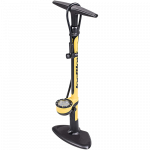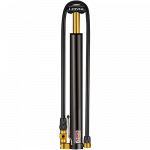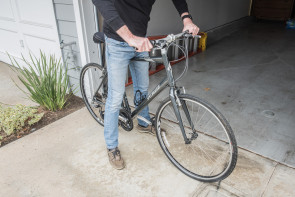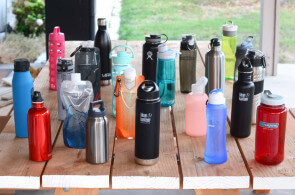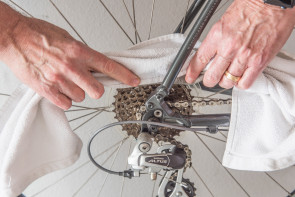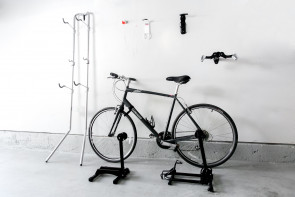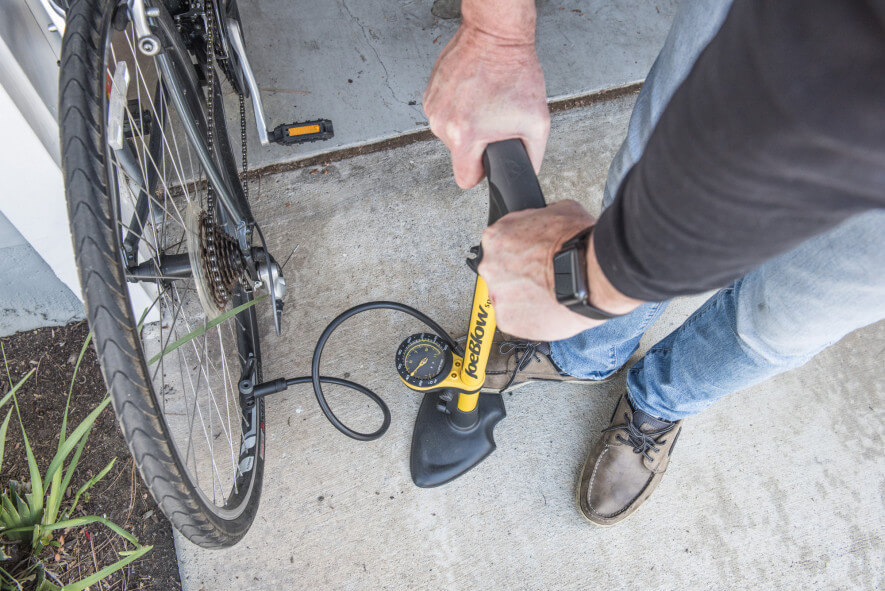
How to Pump Bike Tires
All bike tires slowly leak air every day. Even if you’re an occasional rider, and you only take your bike down from the bike rack once a week, the tire pressure will still decrease. Before you ride, you should always check your tires’ PSI and, if needed, inflate them with a floor bike pump or a handheld pump.
All bike tires slowly leak air every day. Even if you’re an occasional rider, and you only take your bike down from the bike rack once a week, the tire pressure will still decrease. Before you ride, you should always check your tires’ PSI and, if needed, inflate them with a floor bike pump or a handheld pump.
What PSI should bike tires be?
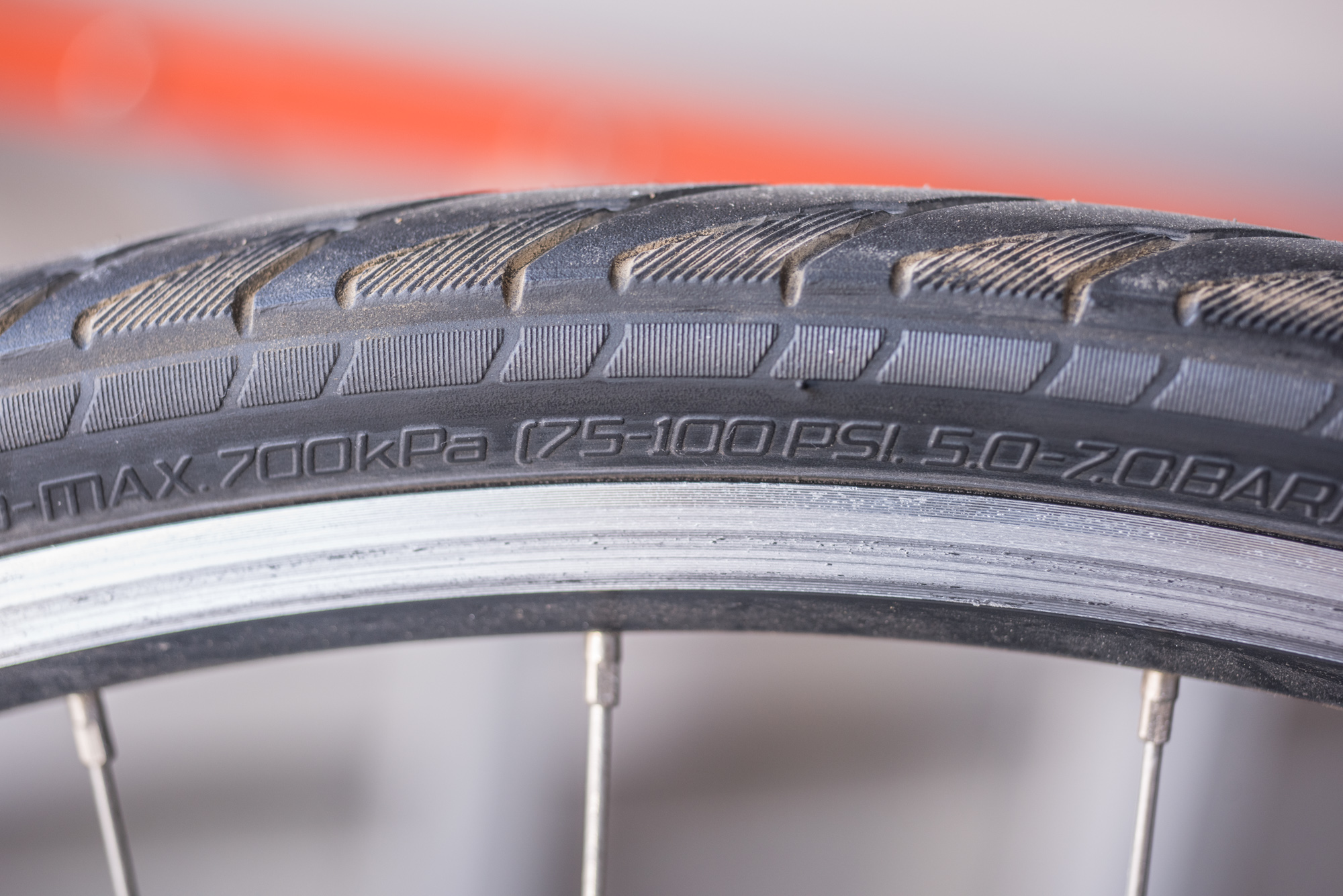
On the sidewalls of your tires, you’ll see the manufacturer’s recommended pressure range for PSI (pounds per square inch). Different bike tires have different ranges, and narrow tires need more pressure than wide tires. The recommended PSI for different tires are:
- Road bike tires: 80–130 psi
- Mountain bike tires: 25–35 psi
- Hybrid tires: 40–70 psi
Experienced cyclists can often estimate whether their tires need to be pumped by pinching the tire between their thumb and forefinger. The more accurate way of knowing when your tire should be pumped is by measuring its pressure with a pressure gauge; if the air pressure is measured below the recommended PSI, it’s time to pump.
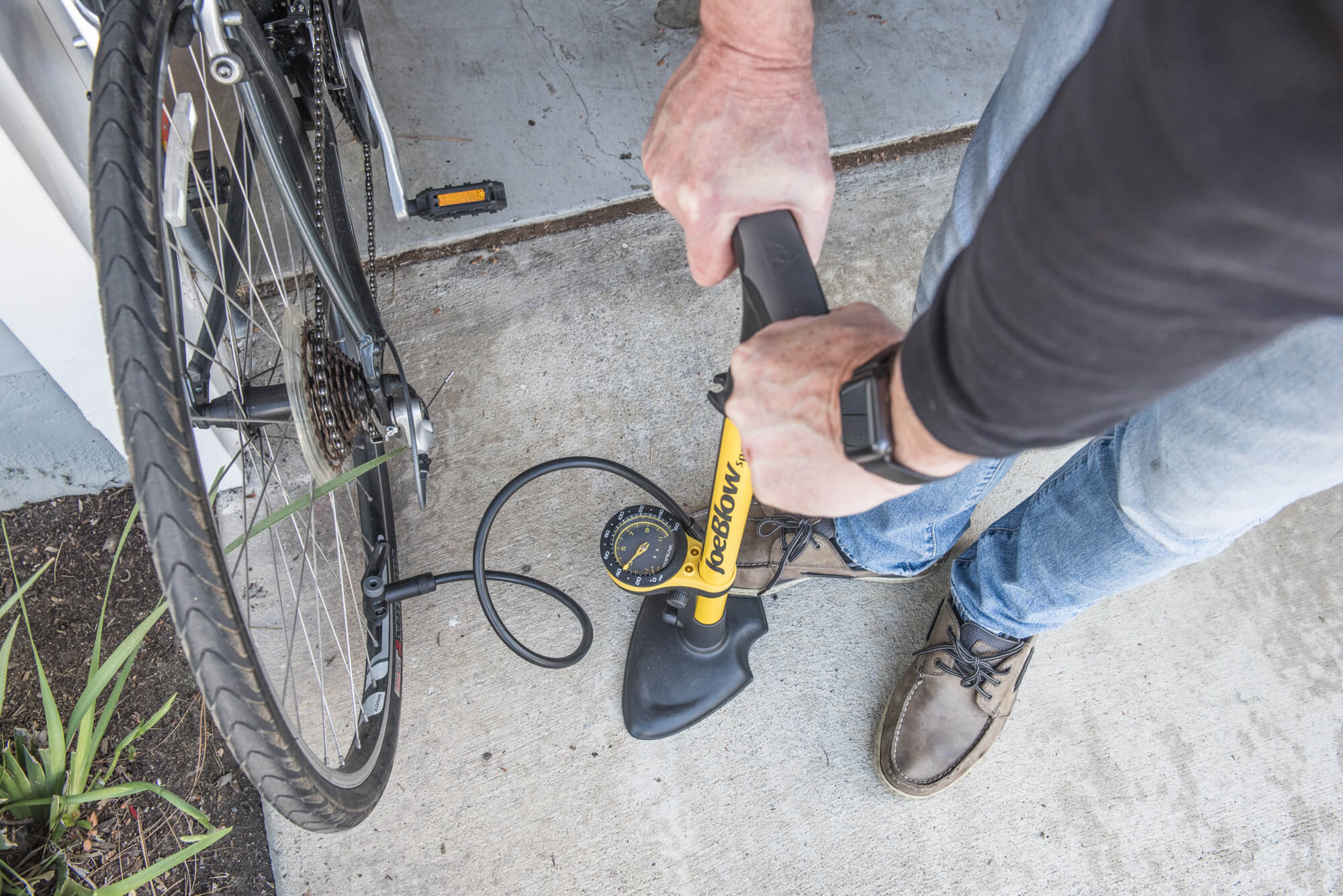
First pump your bike tire to the middle of the range for the recommended PSI. You also need to take your body weight into account. Tires that bear a heavier rider need more PSI. Weather conditions and terrain also affect how a bike rides, so you’ll need to experiment with different PSIs to feel what’s most comfortable to you.
How to pump a tire with a Schrader valve
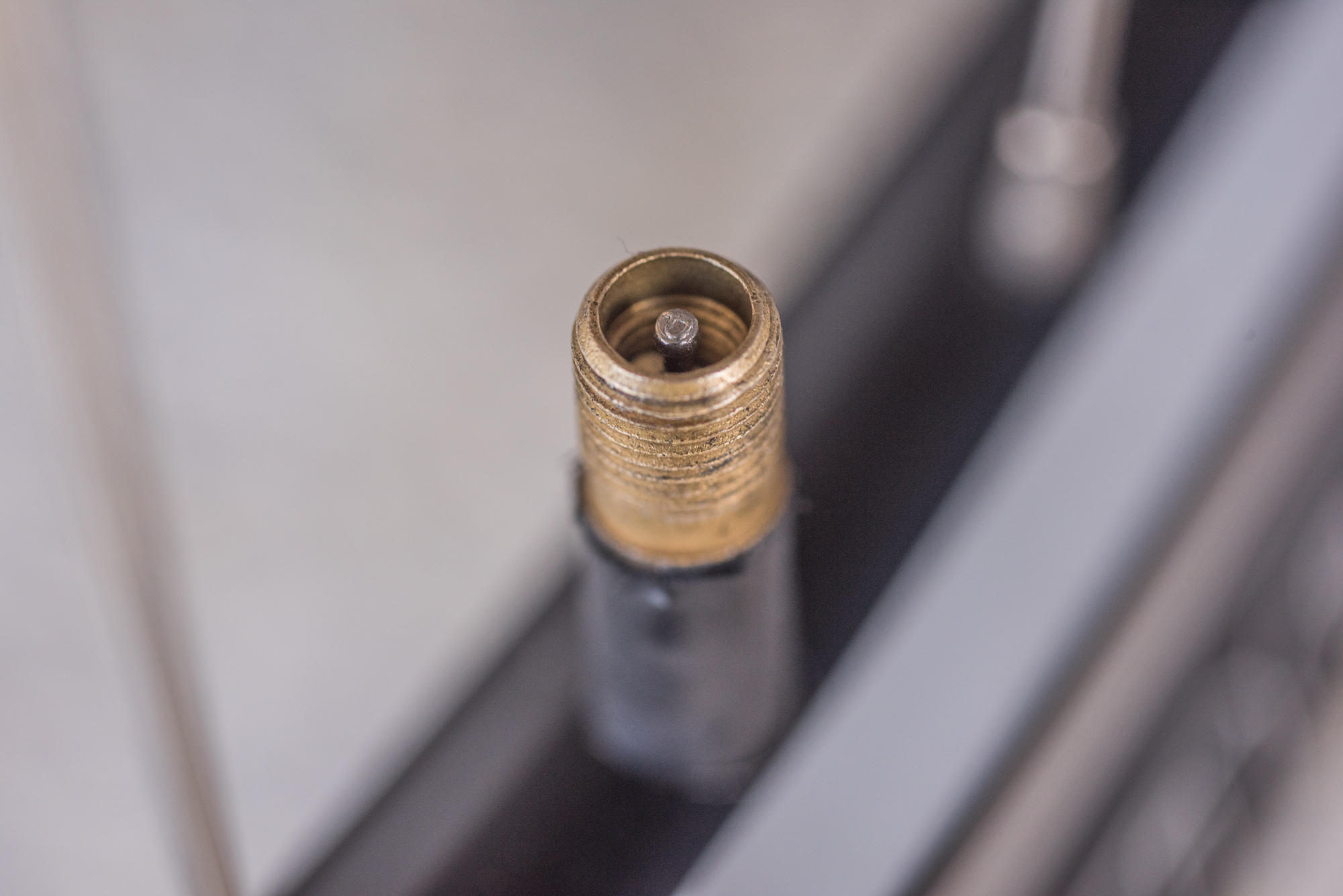
A Schrader valve is the type of valve you’ll find on car tires, older bike tires and mountain bikes. It consists of a metal pin in the center of a threaded valve, and a rubber cap that’s screwed onto the valve. Most bike pumps like those we reviewed have a dual head to accommodate both Schrader and Presta valves or a single head with an adapter.
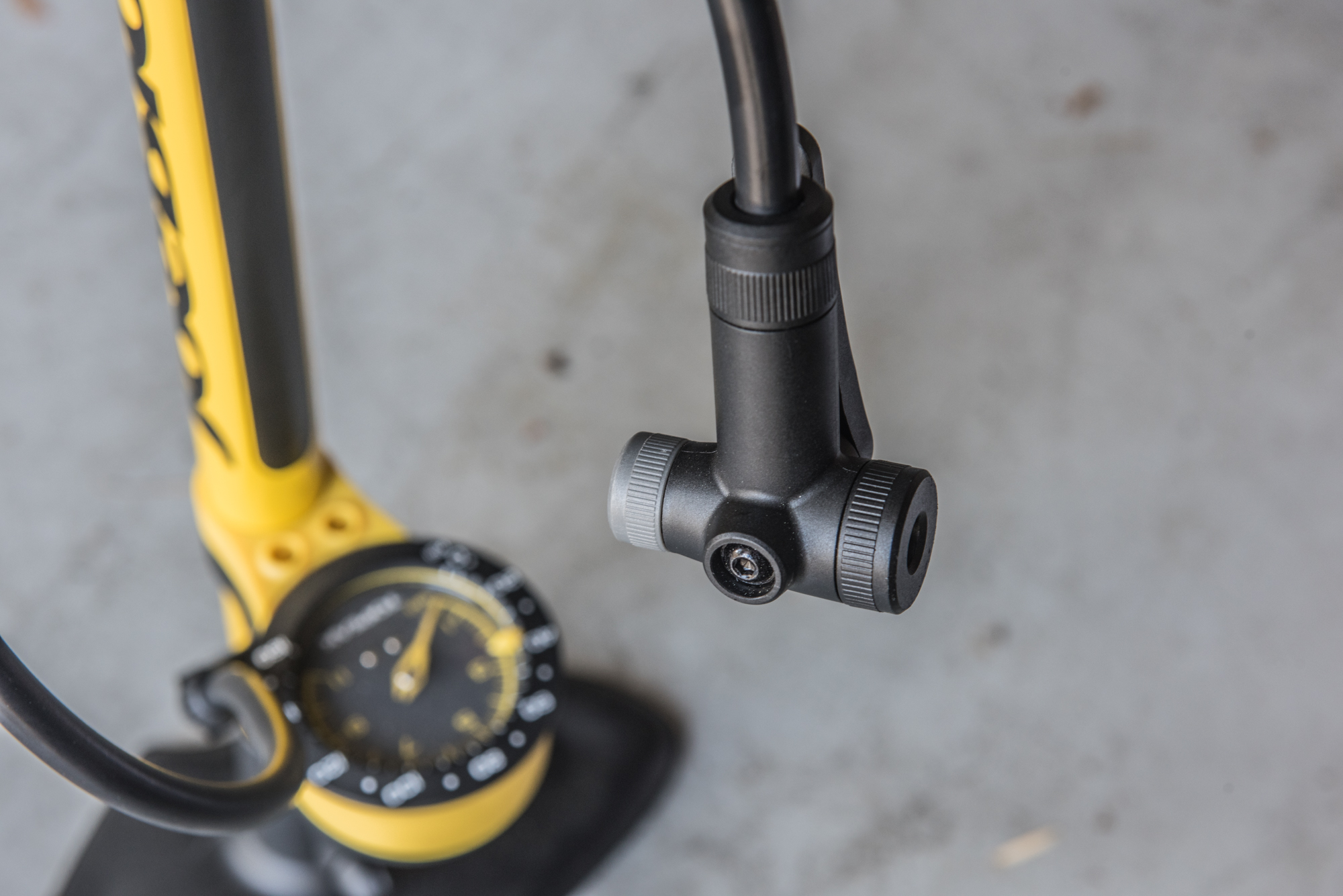
If your tire has a Schrader valve
- Unscrew the rubber cap and put it someplace where it’s easy to find (like your pocket).
- Check the tire’s PSI using a pressure gauge or a bike pump with a built-in gauge, like the Topeak – Road Morph G.
- The pump’s Schrader head is the larger of the two openings. (It’s usually marked with the letter S.) Put the opening onto the tire valve, pressing down so the opening covers the valve.
- The pump head will have a lever that either pushes up or to the left or right. The lever closes off the Presta opening and locks the Schrader opening onto the valve.
- Keeping your eye on the gauge, pump until desired PSI is reached. As the pressure increases, it will take more effort to pump.
- Open the lever, pull up on the head, and screw the valve cap back on.
How to pump a tire with a Presta valve
A Presta valve is found on road bikes and some mountain bikes. It’s a slender valve with a nut at the top that is loosened and tightened before and after inflation. Almost all new bike pumps have a head with openings for both Schrader and Presta valves, or they have an adapter for switching from Schrader to Presta, like one of our top picks, the Topeak – Road Morph G.
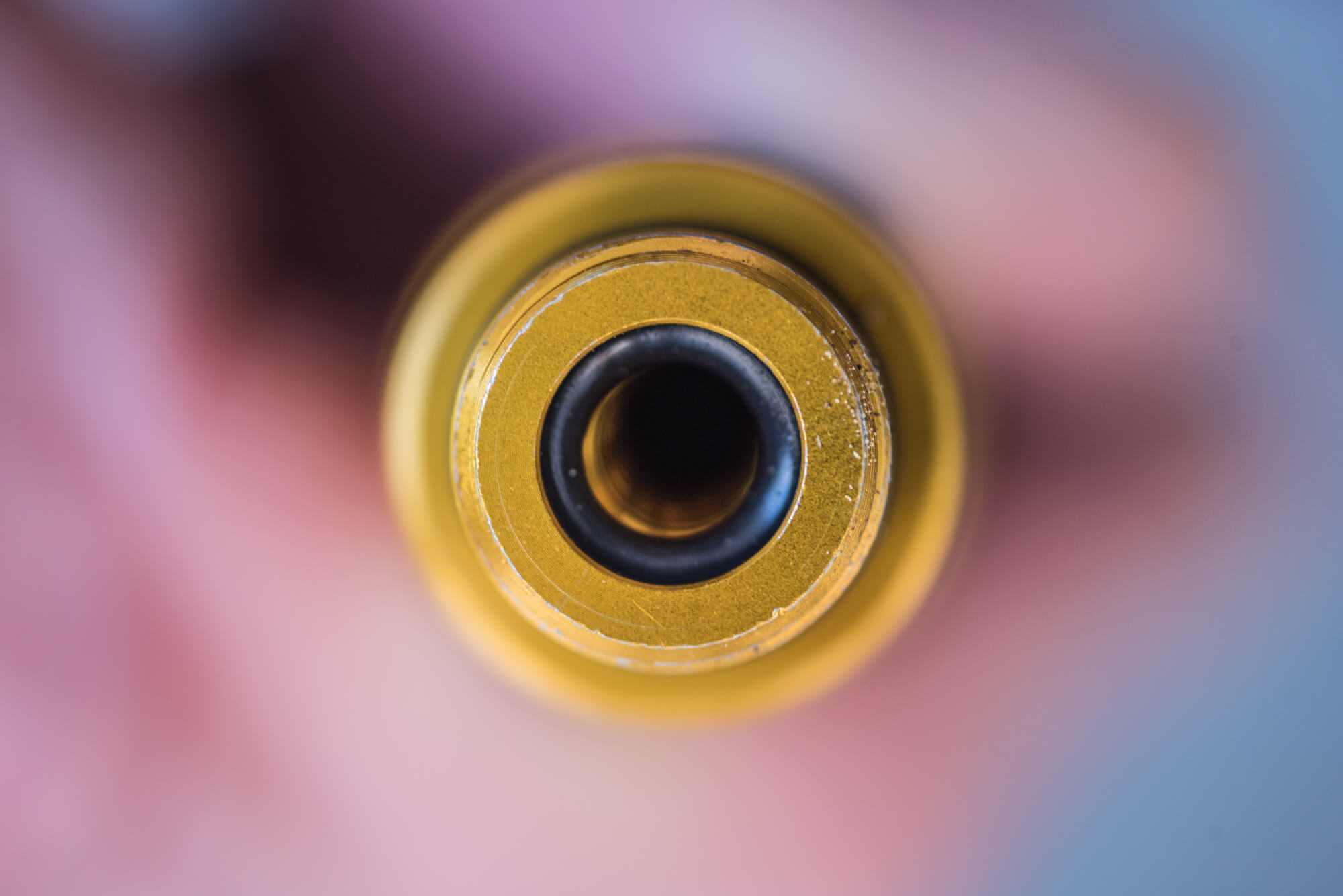
If your tire has a Presta valve
- Unscrew the valve cap.
- Loosen the brass nut at the top of the stem. Press down on the stem, and if you hear a short burst of air escape, it’s loosened enough.
- Put the smaller opening of the pump head on the valve. If your pump has an adapter, switch the opening from Schrader to Presta.
- Flip the pump head’s lever to close off the Schrader opening and attach the Presta opening to the valve.
- Pump until the gauge registers the desired PSI.
- Flip the pump’s lever open and remove the head from the valve.
- Tighten the brass nut, and screw the dust protector back on.
Pumping bike tires at a gas station
If you’re out riding and your tires need air, you could give them a quick inflate with a CO2 injector, like the one we reviewed. But if you don’t have a CO2 injector in your bag, and you forgot your mini pump, then you can pull into a gas station and inflate your tires there.
If you don’t have a pressure gauge, ask the station attendant for one. Inflate your tires to optimal pressure in short bursts; a gas-station air pump has very high pressure, and you run the risk of popping your tire.
A gas-station air pump will only fit a Schrader valve. But if your tires have Presta valves and you don’t have a Presta valve adapter, there’s still a way to inflate them.
- Unscrew the Presta valve cap.
- Use scissors or a knife to cut off the pointed tip at the rim.
- Unscrew the valve stem.
- Turn the cut valve cap upside down, and place it on top of the valve stem.
- Screw the cap onto the stem.
- Put the pump head over the now-modified valve, and inflate your tire in short bursts.
- When your tire is at optimal pressure, remove the pump head, and unscrew the cap. You’re ready to ride again!

